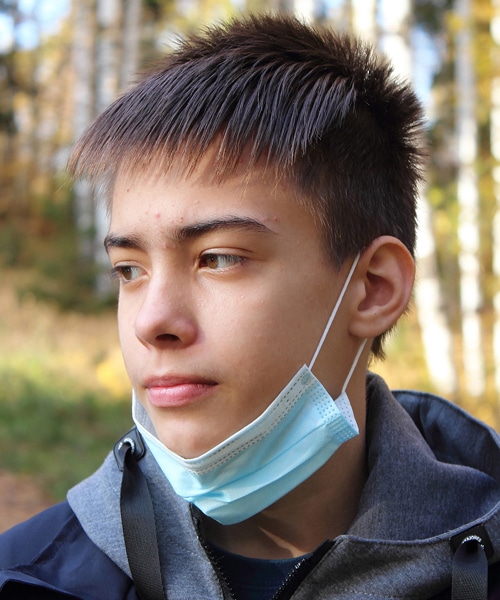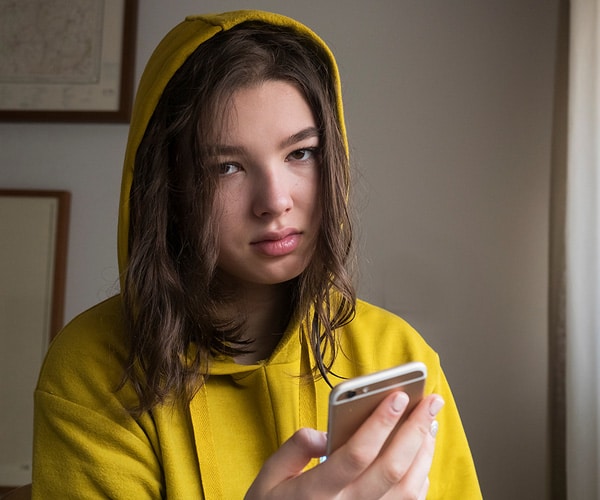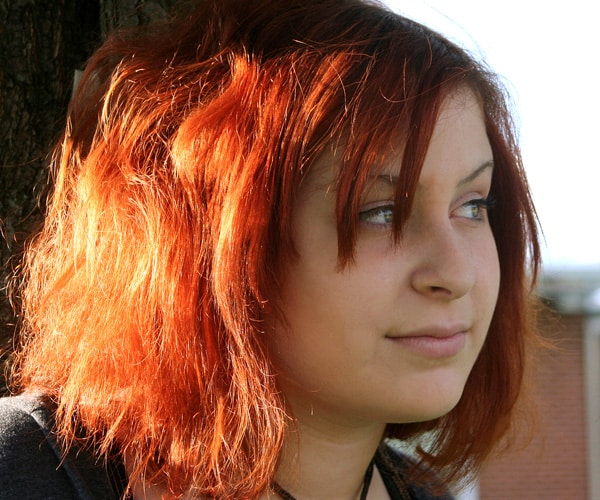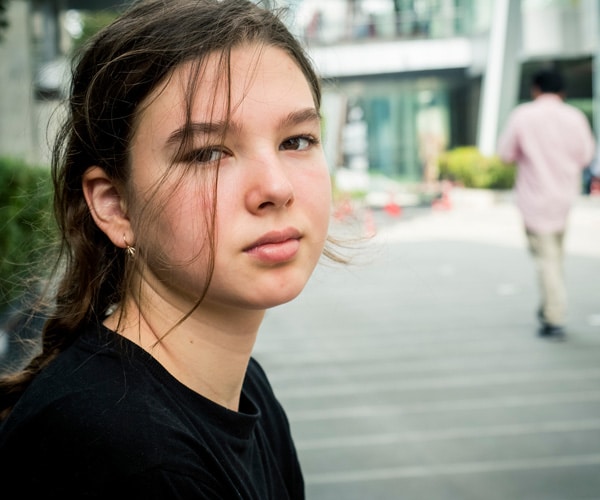Did You Know?

Let’s acknowledge anti-bullying day
February 20, 2023The last Wednesday in February — this year, Feb. 22 — signifies a national stand against bullying. Helping children learn to self-regulate — by paying attention and inhibiting impulsivity — is an important step in reducing bullying. Parents can promote this skill by responding to their children’s needs, providing positive feedback during challenging tasks, and supporting older children and teens to be more autonomous. For more information, see Vol. 15, No. 4 of the Children’s Mental Health Research Quarterly. Titled Childhood bullying: Time to stop, the issue describes the basics of bullying and provides a review of eight bullying interventions, including five that produced some positive effects.

All Canadians can support Indigenous reconciliation
February 13, 2023Indigenous communities in Canada have long displayed strength and resilience in the face of multiple adversities associated with colonialism and its legacies. These legacies have included the forced removal of children into residential schools, the multi-generational aftermath of these policies, continuing overrepresentation of Indigenous children in the child protection and youth justice systems, and ongoing exposure to individual and systemic racism.
To redress these legacies, in 2015 the Truth and Reconciliation Commission issued 94 calls to action. In particular, these calls to action address the deep social and health disparities Indigenous children and families experience in Canada — which are preventable forms of serious adversity. Reducing these adversities is essential to enable all Indigenous children to flourish.
All Canadians can support this flourishing by engaging in reconciliation. For example, we can express support for the Commission’s calls to action and call on federal and provincial or territorial governments to enact them. As well, Canadians can become aware of resources that promote wellness for Indigenous young people, such as those provided by BC’s First Nations Health Authority. For more information, see Vol. 15, No. 1 of the Children’s Mental Health Research Quarterly.

How we can help children cope with adversity
February 6, 2023Research has emerged on factors that help young people cope with having experienced serious trauma such as the death of a loved one or witnessing a violent event. A meta-analysis that combined findings from more than 100 studies identified various factors that buffered the negative effects of experiencing or witnessing trauma. These buffers include family, peer and school support. Family support includes having a warm and accepting parent as well as a cohesive family. Peer support refers to receiving emotional and social encouragement and being satisfied with one’s friendships. School support involves having teachers and other school staff to help children and young people feel valued and safe. For more information, see Vol. 15, No. 1 of the Children’s Mental Health Research Quarterly.

Traumatic events spark other mental health challenges
January 23, 2023A study of 2,000 Welsh and English youth at age 18, showed that young people who had faced trauma were at much higher risk of specific mental disorders. These included:
- substance use disorder (other than alcohol or cannabis) — 3.5 times higher odds
- conduct disorder — 2.3 times higher odds
- cannabis use disorder — 2.3 times higher odds
- generalized anxiety disorder — 2.2 times higher odds
- depression — 2.2 times higher odds
- attention-deficit/hyperactivity disorder — 1.9 times higher odds
- alcohol use disorder — 1.5 times higher odds.
- self-harm —3.5 times higher odds.
- attempting suicide — 5 times higher odds
- committing a violent offense — 1.5 times higher odds.
In a similar study with US youth, all traumatic exposures assessed were associated with up to double the risk for developing a substance use disorder. As well, exposure to interpersonal violence more than doubled the risk for girls developing conduct disorder. For more information, see Vol. 15, No. 1 of the Children’s Mental Health Research Quarterly.

Traumatic events affect a third or more of young people
January 16, 2023Experiencing a significant injury. Witnessing the death of a loved one. Being sexually assaulted. These are just a few of the serious traumas children may experience, which are also commonly referred to as adverse childhood experiences. To support children who have experienced such extreme adversities, it is important to understand the prevalence of the problem. We identified two studies providing prevalence data, based on large, representative samples of young people. The first involved interviews with 2,000 Welsh and English youth at age 18. Some 31% reported experiencing at least one trauma during their lifetime.
The most frequent trauma was learning details about a traumatic event affecting someone close to them, without directly witnessing it (27.9%). Being assaulted or threatened with assault, including maltreatment by adults, was also common (21.5%). As well, many youth described experiencing significant accidents or illnesses (19.0%).
The second study involved interviews with nearly 6,500 American youth aged 13 to 17 years. In this study, 61.8% reported being exposed to at least one potentially traumatic event during their lifetime. Experiencing the unexpected death of a loved one was the most frequent trauma (28.2%), followed by experiencing disasters (14.8%) and witnessing death or injury (11.7%). Adding to this burden, 14.1% of youth reported experiencing two traumatic events, and 18.6% reported being exposed to three or more. For more information, see Vol. 15, No. 1 of the Children’s Mental Health Research Quarterly.

How to treat young people with psychosis
January 9, 2023Psychosis can cause great distress concerning symptoms and substantial costs for young people and their families and communities — including the costs of lost human potential when healthy development is interrupted. Research shows that interventions can mitigate the distress and symptoms, particularly if young people receive these early in the disorder’s course. The Children’s Health Policy Centre suggests three recommendations to guide the treatment of psychosis:
- Ensure careful assessment and diagnosis. Some causes of psychosis, such as substance use, are reversible. Some causes, such as seizures or infections, are also treatable. So, a first step is always to find out what is causing the presenting problem. Diagnosis can then guide treatment planning, for example, considering whether longer-term antipsychotic medications are needed, as with schizophrenia. After the diagnosis has been established, ongoing monitoring is also crucial — to assess a youth’s symptoms, functioning and response to treatment, including any adverse effects.
- Use antipsychotic medications carefully. Antipsychotics are a mainstay in treating psychosis in young people — both short and long term. Aripiprazole and olanzapine stood out in this review, with two RCTs for each medication showing benefits in young people. Yet adverse events were common and severe, so both choice of medication and dosing need to be carefully monitored to ensure that benefits outweigh harms. Guidelines from the Canadian Alliance for Monitoring Effectiveness and Safety of Antipsychotics in Children address monitoring for six antipsychotic medications, including aripiprazole and olanzapine. These guidelines need to be closely followed for any youth who is prescribed antipsychotics.
- Offer psychosocial interventions as well. All youth with psychosis should be offered early psychosis intervention (EPI) programs, as they lead to reduced hospitalizations and psychotic symptoms. EPI programs typically included a range of psychosocial interventions, such as cognitive behavioural therapy, social skills training and family interventions. As well, some youth will have challenges that antipsychotics do not address and these psychosocial interventions will likely benefit them, as well.
For more information, see Vol. 14, No. 4 https://stg-childhealthpolicyca-staging.kinsta.cloud/wp-content/uploads/2020/11/RQ-14-20-Fall.pdf of the Children’s Mental Health Research Quarterly.

Can psychosocial interventions help with psychosis?
December 5, 2022Psychosocial interventions for psychosis may be helpful when used along with antipsychotic medications. For example, the programs Cognitive Remediation Therapy and Computer-Assisted Cognitive Remediation both improved selected cognitive skills, and the Think Program reduced emergency room visits for mental health concerns. But additional studies are still needed to expand treatment options. For example, a form of cognitive-behavioural therapy (CBT) shows promise with first-episode psychosis, according to a recent pilot study in youth aged 14 to 18 years. This form of CBT involved setting individual goals and helping young people achieve them. Although too few youth were recruited to definitively assess the impact, initial findings suggested that CBT may reduce psychotic symptoms. Further evaluation of CBT is therefore warranted. Expanding the psychosocial treatment options for youth with psychosis is particularly important given the severe side effects of antipsychotic medications. For more information, see Vol. 14, No. 4 of the Children’s Mental Health Research Quarterly.

Medication studies for psychosis raise concerns
November 21, 2022The Children’s Health Policy Centre found two studies for medications for psychosis — aripiprazole and olanzapine — each suggesting benefits, with aripiprazole leading to greater remission rates. Yet both medications also led to adverse events that require close monitoring. Our review of medications has two concerning implications that should be addressed in future research. First, neither of these medication studies was conducted at arm’s length from the drug manufacturers. Future studies need to be conducted independently, particularly given the safety profiles of antipsychotics. Second, we did not find any evidence from randomized controlled trials meeting our criteria for risperidone (brand name Risperidal), which is commonly prescribed for young people. Other researchers have raised concerns about the poor quality of trials on risperidone (and other antipsychotics). It is therefore important that new trials be conducted to expand the evidence on effective medications for treating young people who have psychosis. For more information, see Vol. 14, No. 4 of the Children’s Mental Health Research Quarterly

Nov. 20 is Universal Children’s Day
November 14, 2022

Early intervention for psychosis carries clear benefits
November 7, 2022For psychotic disorders, age of onset typically peaks at 22 years for males and 25 for females. Onset of psychotic symptoms or disorders is very rare prior to the teen years, yet early symptoms sometimes emerge in adolescence. Therefore, treatment services for young people with psychosis need to be readily available. Intervening early is crucial for youth with psychosis, given the strong association between duration of untreated symptoms and poorer short- and long-term outcomes. For more information, see Vol. 14, No. 4 of the Children’s Mental Health Research Quarterly.
